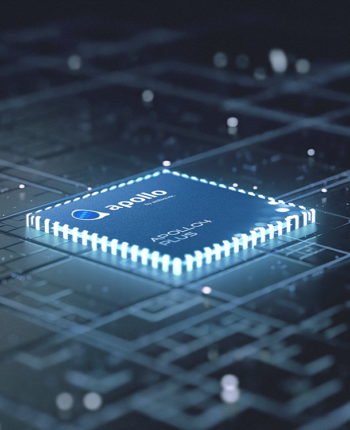The 5-Second Trick For Ambiq apollo3 blue
The 5-Second Trick For Ambiq apollo3 blue
Blog Article

Executing AI and item recognition to form recyclables is sophisticated and would require an embedded chip effective at managing these features with substantial effectiveness.
Generative models are Probably the most promising ways in direction of this target. To train a generative model we 1st acquire a large amount of data in some area (e.
Printing above the Jlink SWO interface messes with deep slumber in several strategies, that happen to be dealt with silently by neuralSPOT provided that you use ns wrappers printing and deep slumber as within the example.
AI characteristic developers face lots of necessities: the aspect have to in good shape within a memory footprint, meet up with latency and accuracy needs, and use as minimal Vitality as feasible.
The Apollo510 MCU is at present sampling with consumers, with standard Embedded Solutions availability in Q4 this 12 months. It has been nominated because of the 2024 embedded planet community underneath the Hardware group to the embedded awards.
Inference scripts to test the ensuing model and conversion scripts that export it into something that can be deployed on Ambiq's hardware platforms.
neuralSPOT is consistently evolving - if you desire to to add a effectiveness optimization Software or configuration, see our developer's guide for suggestions regarding how to best lead into the job.
The model contains a deep understanding of language, enabling it to accurately interpret prompts and create compelling figures that Categorical vibrant emotions. Sora may build a number of shots inside a solitary produced online video that correctly persist people and visual design.
Power Measurement Utilities: neuralSPOT has built-in tools to aid developers mark locations of curiosity through GPIO pins. These pins might be linked to an Electricity observe to assist distinguish diverse phases of AI compute.
To put it differently, intelligence have to be obtainable over the network every one of the strategy to the endpoint in the supply of the info. By increasing the on-machine compute capabilities, we can greater unlock true-time facts analytics in IoT endpoints.
One these latest model may be the DCGAN network from Radford et al. (revealed below). This network can take as enter a hundred random numbers drawn from a uniform distribution (we refer to these being a code
We’re pretty enthusiastic about generative models at OpenAI, and also have just introduced four projects that progress the point out of your art. For each of these contributions we also are releasing a technological report and source code.
We’ve also developed strong image classifiers that happen to be utilized to overview the frames of every video generated to aid make sure it adheres to our usage insurance policies, before it’s shown on the consumer.
This great amount of money of data is around and to a significant extent simply accessible—both from the Actual physical world of atoms or perhaps the electronic world of bits. The only challenging section is always to produce models and algorithms that may evaluate and comprehend this treasure trove of info.
Accelerating the Development of Optimized AI Features with Ambiq’s neuralSPOT
Ambiq’s neuralSPOT® is an open-source AI developer-focused SDK designed for our latest Apollo4 Plus system-on-chip (SoC) family. neuralSPOT provides an on-ramp to the rapid development of AI features for our customers’ AI applications and products. Included with neuralSPOT are Ambiq-optimized libraries, tools, and examples to help jumpstart AI-focused applications.
UNDERSTANDING NEURALSPOT VIA THE BASIC TENSORFLOW EXAMPLE
Often, the best way to ramp up on a new software library is through a comprehensive example – this is why neuralSPOt includes basic_tf_stub, an illustrative example that leverages many of neuralSPOT’s features.
In this article, we walk through the example block-by-block, using it as a guide to building AI features using neuralSPOT.
Ambiq's Vice President of Artificial Intelligence, Carlos Morales, went on CNBC Street Signs Asia to discuss the power consumption of AI and trends in endpoint devices.
Since 2010, Ambiq has been a leader in ultra-low power semiconductors that enable endpoint devices with more data-driven and AI-capable features while dropping the energy requirements up to 10X lower. They do this with the patented Subthreshold Power Optimized Technology (SPOT ®) platform.
Computer inferencing is complex, and for endpoint AI to become practical, these devices have to drop from megawatts of power to microwatts. This is where Ambiq has the power to change industries such as healthcare, agriculture, and Industrial IoT.
Ambiq Designs Low-Power for Next Gen Endpoint Devices
Ambiq’s VP of Architecture and Product Planning, Dan Cermak, joins the ipXchange team at CES to discuss how manufacturers can improve their products with ultra-low power. As technology becomes more sophisticated, energy consumption continues to grow. Here Dan outlines how Ambiq stays ahead of the curve by planning for energy requirements 5 years in advance.
Ambiq’s VP of Architecture and Product Planning at Embedded World 2024
Ambiq specializes in ultra-low-power SoC's designed to make intelligent battery-powered endpoint solutions a reality. These days, just about every endpoint device incorporates AI features, including anomaly detection, speech-driven user interfaces, audio event detection and classification, and health monitoring.
Ambiq's ultra low power, high-performance platforms are ideal for implementing this class of AI features, and we at Ambiq are dedicated to making implementation as easy as possible by offering open-source developer-centric toolkits, software libraries, and reference models to accelerate AI feature development.

NEURALSPOT - BECAUSE AI IS HARD ENOUGH
neuralSPOT is an AI developer-focused SDK in the true sense of the word: it includes everything you need to get your AI model onto Ambiq’s platform. You’ll find libraries for talking to sensors, managing SoC peripherals, and controlling power and memory configurations, along with tools for easily debugging your model from your laptop or PC, and examples that tie it all together.
Facebook | Linkedin | Twitter | YouTube Report this page